Cycles Within Cycles by Phyllis Chubb
Article by Phyllis Chubb
Within the last six months, researchers associated with NASA have discovered large bands of energy flowing from the Sun to the Earth. The researchers have named these discrete bands of geomagnetic energy, Magnetic Ropes. The effect of these bands of energy has been known for some time, what is new is that now the size and intensity of these bands of electromagnetic energy can be measured.
This information is not really new to anyone who has studied Jyotish. As will be shown, Parasara has provided us with a method, called ‘Ashtakavarga’, to evaluate the ‘magnetic ropes or inter-relationship of planets between themselves, as each graha moves through the zodiac. There are numerous books that have been devoted to this technique, which Parasara praised so highly and detailed for us in Chapter 68 of his great work.
The idea of the planet having the ability to touch everything individually has also been well accepted by mystics and seers from all traditions. Yet, it is only now that ‘Western science’ seems to be catching up as the following examples will show.
The fact has been established that even “tiny geomagnetic fluctuations have the most profound effect on the two major engines of the body: the heart and the brain.”
The findings of Franz Halberg, an Austrian biologist and researcher, at the University of Minnesota offer some of the best support yet available, showing the influence of planetary action on all individual life forms. This person was able to establish the relationship between the daily rotation of the earth and patterns of cellular activity. Basically, he established that the cellular strength of all life forms is highest in the morning and lowest at night.
Halberg’s finds, support the teachings held in Jyotish that the strength of the sun begins increasing at dawn and continues to do so until noon, where it begins to weaken, as it appears to move toward the descendant and the nadir. Halberg’s research began under the heading of Chronobiology. However, after much study he renamed his life’s work “chronoastrobiology” the rhythms of biology as affected by astral bodies. As a result of his ground breaking work he is recognized as the father of Chronobiology. While still working in his eighties he proclaimed: “the synchronizer within every living thing is not internal but resides in the planets – particularly the sun.”
Details of Halberg’s work and that of other researchers such as Dr. Michael Persinger from the Laurentian University in Sudbury, Canada can be reviewed by a computer search of their names. Further, the reader is encouraged to do a search on the words: Chronobiology and Chronoastrobiology. There the reader will find many hours of research aligning planetary activity with physical health and well-being.
The findings of these researchers are exciting for a number of reasons. They validate what the Maharishi claimed. They lay a tentative explanation for the accuracy of Jyotish and all other forms of astrology. In addition, these are but a beginning in the objective understanding and measurement of the inter-connectedness of everything and everyone, along with the fluctuating energies that surround us all. The most exciting part is that these findings support the expanded use of the ashtakavarga that will be introduced below.
The Ashtakavarga: Understanding the cycles within.
Space limitations demand that basic familiarity with ashtakavarga is assumed. At the end of this article, a list of recommended publications will be provided. In each of the recommended books the reader will find classical interpretations for the specific ratings shown in the system of evaluation.
The blank graph below has been designed in order to see the movement of any chosen graha through its passage along the Zodiac. Basically, the graph allows the plotting of the individually assigned numerical value ranging from zero to 8 as shown within the Sarvashtakavarga (SAV). The rating indicates the intensity of each grahas interaction with the other grahas and reflects the influence the graha will have at the moment on a given individual. A value of zero means there is no interaction and no support flowing to an individual from that graha. A value of 8 indicates the maximum interaction between all the bodies. Such a high showing of direct support will function as a major benefit for an individual. Example #1 shows a generic form on which the information of each graha shown in the SAV can be presented in a dramatic way.
The data for all examples will be generated from JHora 7.1 and will be using Parasara’s method for assessment.
Example 1: The blank graph:
| AR | TA | GE | CA | LE | VI | LI | SC | SA | CP | AQ | PI | |||
| SA | ||||||||||||||
| 7 | ||||||||||||||
| 6 | ||||||||||||||
| 5 | ||||||||||||||
| 4 | ||||||||||||||
| 3 | ||||||||||||||
| 2 | ||||||||||||||
| 1 | ||||||||||||||
| 0 | ||||||||||||||
Why Introduce Something More?
The original impetus for the information that follows came from an introduction into the ashtakavarga. I found the blanket statements to be very limiting. For example, in the book entitled ASHTAKAVARGA written by the late C.S. Patel and C.A. Subramania Aiyar it is stated on page296 that when the Moon transits a sign having zero bindu the native will experience “sorrow, anxiety, unexpected death.”
This is a rather harsh statement given the regularity and speed with which the Moon transits the entire zodiac! A second statement on the same page is another example: “Death should be a certainty, if on a day, the sum of bindus associated with the seven planets in signs transited by them (in their respective B.A.V.’s) be very little.” These types of statements gave me cause to think there might be another way of using this data. Furthermore, I was seeing charts in which the totals of the fast movers dipped considerably, yet the people were attaining mature ages without cyclical periods of doom and disaster in their lives.
Given the level of general accuracy in what I had been reading and what I was being taught, these statements simply didn’t make sense. To me, something was missing so I started to ‘play’ with possibilities.
Additional support for looking at this data in a different way was provided by a statement made by Hart DeFouw: “None of the rules of Jyotish are sacrosanct, for all Jyotishis must develop their own rules over time. There is no use in becoming attached to the rules, but there is also no way to develop your own system without first knowing the rules.”
In addition, having a background and training in psychiatry and community psychology naturally impressed upon me the importance of a person’s individual worldview, which is dependent on how they ‘see’ the world. This bias, combined with the acknowledgement of the Moon’s role in the shaping of our minds made the leap to a different way of looking at the data, a natural one.
Finally, there is the slight chance that Parasara considered this information to be so basic that it wasn’t shared. This idea has been the explanation for some of the teachings found in the Jaimini Sutras.
To clarify what I am sharing here let’s first go back for an explanation of the initial and blank graph. Down the left side of the graph there are the numbers 0 – 8: zero being the poorest rating and 8 the highest. The lines numbered 3, 4 and 5 identify degrees of harmony, or normalcy, with three being low normal, four normal and five showing high normal. Any placement below 3 indicates decreasingly lower energy whereas placements above 5 indicate increasingly higher levels of energy. Across the top are listed the signs, or rasi, each graha will transit in the course of time. This information is available in any sidereal ephemeris or panchanga.
The only graph form to which a consistent date can be applied will be that used for the annual motion of the Sun. The Sun enters Aries each year in mid April where it stays for 30 days before travelling on to Taurus. Although the graph showing the Moon’s transits can also be dated this is not a wise thing to do. It is much better to encourage the client to feel the shifts than to look at a calendar. By encouraging conscious awareness of different feeling states a person begins the process of recognizing the power they hold within their decision making capabilities. The whole idea of cyclical patterns in life is accepted a person will no longer feel caught for eternity in a pattern of negativity as is the case with many times.
Over the years these graphs have proven to be vitally important for a large number of clients. The mere presentation of an individual ‘mood’ pattern has enabled many clients to exercise personal control over their attitudes, and therefore their behaviour, and interactions with others. Usually when clients see their personal patterns there is an immediate ownership. One usual exception to the immediate acceptance of inconsistent moods occurs when the client holds an afflicted Sun Atmakaraka.
Later more will be shared about the associated training that is provided to clients whose lunar graphs show sudden and drastic swings. In addition, more will be shared about the various ways this information can be used. Now let’s start looking at these graphs beginning with a sun graph.
Looking At Data Another Way
Graph example 2, shown below, has been taken from the SUN SAV totals of a very successful artist. This woman (Oct 13, 1955 13:53 79W23 43N39 5hours W of GMT) is known far and wide for her consistent energy level and ability to continually produce highly original and creative pieces of art. According to her, mid January to early March has always been a stressful time for her. She reports that she has no energy during this time of year. As she says, “It’s like I have to hibernate because my inner battery is so low!”
Example 2: The Sun’s Path

Rather than turning to usual interpretations of the sun passing through an area with only one bindu let’s consider this value from another perspective.
We know the sun represents our very being, our core, our basic energy. Nothing can survive without the sun. Because this is the graph of the sun it becomes easy to name the approximate date of each level as the sun passes through each sign in 30 days. As a rule of thumb, the sun enters Aries around the 15th of April, so each following month is marked by another sign. For example, this graph begins with her sun showing a rating of 7 as the sun enters Aries in mid April. Based on this it can be said she enjoys the spring as she has high energy. By mid May her energy level has dropped to normal only to rise well above normal by mid June. By July until January her energy level remains strong before it begins to drop off by the end of January as it heads to the annual low of only 1 point by mid February. Likewise, it is easy to see how 2 weeks later her energy returns to the normal range and she is off once again.
Prior to seeing this graph this person was tormented each year and she dreaded the arrival of mid January that always made her feel so bad and so very unproductive. In the years since she has had this graph she now looks forward to this period and sees it as a time of rest and recouping her energy. No longer does she fear for her mental health or her creativity because she knows once the end of February comes she will be just fine.
This next example will involve using the graph to map a lunar cycle of another person.
Example 3 (June 16, 1978 at 19:38 7 hours west of GMT at 123W21 and 48N26.) shows the movement of one person’s Moon through its 30 days trip around the Zodiac and as can readily be seen it isn’t quite as simple as the previous example.
Example 3

The movement in example 3 shows how that person’s ‘mind’ fluctuates over the course of each month. The example graph clearly shows mood swings the results of which have affected all areas of this person’s life in terms of relationships and personal motivation.
This individual has had a long history of challenges in all types of relationships and through ignorance has wounded many people as well as having destroyed many life opportunities. Surprise and instant recognition were the responses of this person when first presented with her ‘mood’ graph. The most encouraging part of the recognition was her use of the universal question: “How can I change this?” Believe me, as people learn how to become more conscious they can, and do, change their behaviour and mood patterns! Some of the interventions that have been developed will be presented later but first let’s look at the situation before us in example 3.
In the Moon graph, it is assumed the reader knows the Moon passes through each sign in a matter of only 2 ¼ days and travels through all 12 signs in 30 days.
The analysis of the Moon cycle will begin with Aries showing 6 points. This indicates the person starts the first days of the month in high spirits but rapidly drops to quite a dark mood by the third and fourth day before bouncing up to a high normal mood on days 7 – 9 before heading to the basement again.
After the rocky first 10 days of the month, the next week until level 2 is hit again which begins a most dangerous period. Imagine living with someone who, in the course of a few days, changes from sulking to having a mobile positive attitude only to drastically drop to the lowest possible level overnight. Take a moment to imagine the effect of such a mood swing.
Since being a child this individual has verbally attacked parents, teachers, friends and family members one day only to praise them the next. Yes, there certainly are other factors in this chart that underscore this person’s self-centeredness. Be sure, there is no attempt being made to put all the responsibility on to this one factor, however, this factor has become a tangible way for her to see her behaviour. As usually happens this client expressed a desire to learn ways of being consciousness, rather than, as she said, “Merely reacting like a leaf in the wind”.
Will this awareness bring about an immediate change in the life of this client? Of course not, but what has happened lays the foundation for continued improvement. Over years of working with people, many who have had an even greater task before them, change does occur relatively quickly.
To really appreciate the challenge this person faces the graphs of her Mars and Mercury will also be presented as examples 4 and 5.
Example 4: Mars

Mars represents stamina and energy among other things and as we look at this graph much insight will be gained if we limit ourselves to assessing an individual’s energy level over each approximate a two-year period.
Here we see that when Mars transits Aries to the beginning of Gemini this person will have a normal energy level. The longer Mars remains in Gemini the lower her energy becomes until finally as Mars enters Cancer her energy is totally flat. If Mars is travelling at a normal speed it will not be long before her energy level will climb back to normal and beyond as it enters Leo as so forth.
What must be remembered is that each 30 days the whole cycle of the Moon will fit into the Mars pattern. The Moon’s cycle will either increase the energy level or decrease it depending on the Moon’s rating at any given time.
So, when we look at the low level of Mars as it passes through the latter part of Gemini and early Cancer we can also see how drastic her moods will be as the Moon transits the latter part of Capricorn into the middle part of Aquarius. To add to this puzzle one more graph will be shown, that of Mercury, another fast mover.
Example 5: Mercury

Mercury’s cycle is completed every 88 days. So within these 88 days we must consider the 30-day cycle of the Moon also occurring. Once again the spikes and drastic drops in Mercury energy will be affected by the Sun, Moon and Mars cycles as well.
When we see such inconsistency in the energy patterns we naturally can expect to see inconsistent behaviour patterns as well.
Intervention Techniques:
Again, space does not allow a detailed description of the various interventions techniques, which can be used in different situations. What will be offered will be the initial step toward encouraging and teaching clients how to move toward a state of enhanced conscious decision making.
Step one is to validate the client’s experience of energy and the feeling he or she have associated with different time periods. This can be accomplished by asking about different times when their energy patterns showed either great strength or great weakness. Interestingly, every client has mentioned that they can feel the energy shifts setting in. In fact, clients frequently volunteer their awareness of these sensations even before they were asked. Situations where such acknowledgement was not forth coming have only been in cases where serious emotional and/or psychological problems exists, and thankfully such situations have been rare. As said before, where the Atmakaraka (soul significator planet) is an afflicted Sun this author has noticed a tendency to blame others rather than showing a willingness to look within or accept personal responsibility for their role in relationships.
Some clients, who had been prescribed mood-altering medication, have been able to wean themselves off the chemicals as they developed their skills at monitoring their own consciousness.
This is a very important point. Jyotish, the science of light can rightly be called the science of consciousness. What has been shown here are maps of different levels, or forms, of conscious states. The more people take charge of their consciousness the easier the control of their actions become. In turn, people also become more responsible for their behaviours and therefore the less likely to build negative karma.
Step two involves learning to breathe: the art of slowly filling the lungs and holding the breath for an equal length of time before slowly exhaling. This simple procedure has the effect of calming the mind and bringing consciousness into the present and both effects give a person a chance to think before acting. The importance of breath work is nothing new to anyone following a Vedic path or using Pranayam yoga .
Step three involves learning to assess immediate options and boundaries before acting. Asking one’s self questions such as: “Can I do anything to make this situation better right now?” If so, do it. If not, move on to something else. There is much more involved here, however, it will have to wait for another time.
Step four focuses on keeping one’s consciousness in the present. This step is vitally important as when we focus on the past or the future we are powerless. It is only when we act in the present that we are able to make a difference.
Step five involves learning to listen, and correcting if necessary, inner self-talk.
Step six can be the most challenging task as it involves acknowledging one’s self for the effort put forward. In other words, clients are encouraged to say ‘Thank you’ to themselves for making use of the previous steps.
True, these intervention techniques sound simple yet they are most effective aids for the enhancement of behaviour and therefore karma. If we change the way we react to situations before us, we in turn change our karma. This simple statement opens the door to many questions for each Jyotishi to ponder.
Areas of Use:
Obviously, these graphs work well with individuals however there are other situations where the graphs have also proven to be most valuable.
In relationships, especially new relationships, these graphs play a major role in allowing each partner to ‘see’ the energy and mood patterns of them self and their partner. The advantage of this knowledge is that by seeing the natural patterns of each other a greater tolerance and acceptance can be established.
Likewise, the combined cycles of each member of a family have been done. The benefits are the same as when this is done for couples except the effects involve more people and greater diversity
In situations where a person has drastic swings in their moods they usually undertake 4 – 6 coaching session to develop the skills they need to balance their moods. Does this work each and every time? No. The individual has to want to develop the skills because without the desire to increase their awareness nothing can be done.
Conversely in situations where it is the energy level that swings, these situations are dated and when particularly low energy periods occur clients are encouraged to get more rest, eat well, keep their schedules as light as possible, take numerous ‘rest’ periods throughout the day, and sit with their feet up as often as possible. Interestingly, a number of clients who have had blood work done during these periods have reported back that their iron levels in their blood were low. At this point I do not know if this is a consistent factor, nor do I have the skill to find out, but it is an interesting observation.
Two Questions to Explore:
The first question we must ask is: “What is the purpose of reading a birth chart”? According to my understanding of Jyotish, being the science of light, it is intended to shed light (knowingness) on each person’s life, thereby providing greater self-understanding. The ensuing light will thereby enable the native to make decisions that are self-honoring while being respectful of others. In my opinion, using ashtakavarga data in the ways that have been described above fulfills that aim.
Secondly, is there only one correct interpretation to be applied to the data showing in a birth chart? In my opinion, Jyotish is a dynamic science and as such is therefore filled with life and vitality, two major factors that speak of growth and expansion. Therefore, I believe no harm or disrespect is shown by building on the vast sea of knowledge that has been provided to us.
What has been presented is only a beginning and it is my hope that other people will begin to watch the role of the transits in relationship to their ratings as given in SAV. Anyone who wishes is most welcome to share his/her findings, observations or doubts with me via e-mail: Phyllis@phyllischubb.com


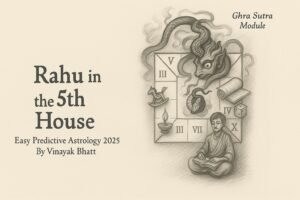
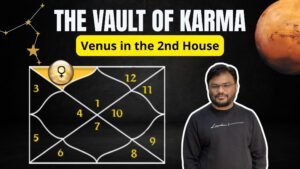
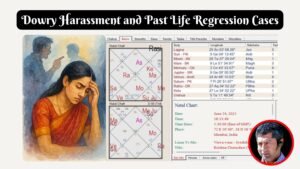


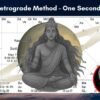
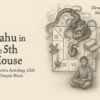

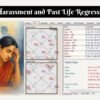
Leave a reply
You must be logged in to post a comment.